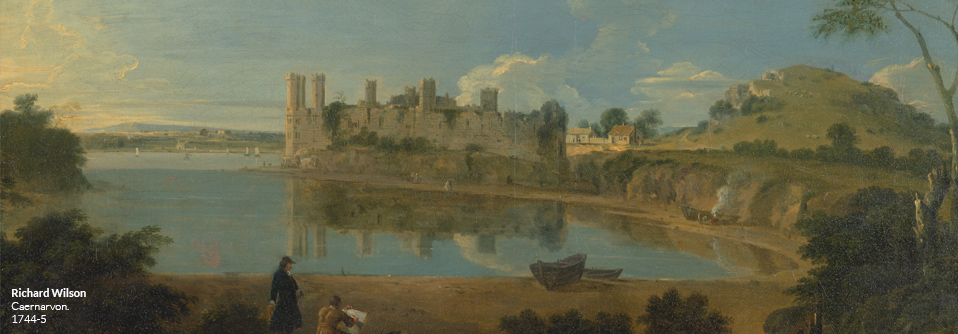Richard Wilson: A Tercentenary Re-Examination
Event Navigation

Oliver Fairclough
Keeper of Art, National Museum Wales
Professor Prys Morgan President of the Society in the chair
About the Lecture
Richard Wilson (1713/4-1782) is often called the ‘father of British landscape painting’. Born in Penegoes, near Machynlleth, and a founder member of the Royal Academy in 1768, he was the first artist to find inspiration in the landscape of Wales. As such, he was to exert a profound influence on all his successors from J M W Turner to John Piper and Kyffin Williams. Even today it is hard not to see Snowdonia through Wilson’s eyes.
Wilson’s reputation, especially in Wales, was at its height at the beginning of the 20th century, but he had largely faded from public consciousness by the 1960s. The recent major exhibition organised by the Yale Center for British Art and Amgueddfa Cymru-National Museum Wales, and shown in both New Haven and Cardiff in 2014, was the first scholarly re-assessment of Richard Wilson for nearly thirty years, and positioned him as a figure of pan-European significance. Among much else, this revealed that Wilson, both in Italy and in Wales, was one of the first artists to paint landscapes that expressed mood and emotion, while also conveying an actual sense of place. The exhibition also shed further light on the importance of Wilson’s family connections in north-east Wales throughout his career.
The Speaker
Oliver Fairclough is Keeper of Art at Amgueddfa Cymru – National Museum Wales, where he has worked since 1986, initially as Assistant Keeper for ceramics, silver and craft. He read History at Trinity College, Oxford, has an MA from Keele University and is a Fellow of the Society of Antiquaries. He led the recent (2007-11) redevelopment of the art galleries at the National Museum to create the National Museum of Art for Wales.

